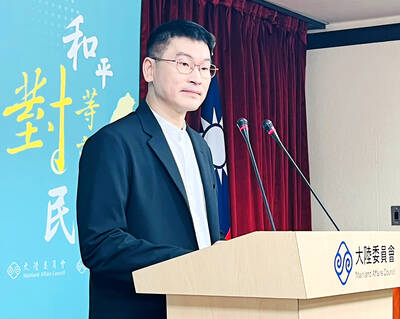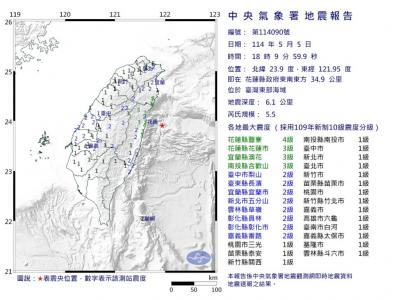The New Power Party (NPP) caucus yesterday proposed draft legislation to prevent media monopolies and to maintain media pluralism to address issues that sparked protests against media monopolization in 2012.
The proposal seeks to limit media mergers, stipulating that a company cannot own more than three of the seven types of media businesses — cable TV; terrestrial TV; Internet protocol broadcasts; national radio stations; news and business channels; national daily newspapers; and channel distribution agencies — to prevent media conglomerates from interfering with freedom of the press.
The draft upholds the principle of “separation between media and financial institutions,” prohibiting holding companies, banks and insurance companies, as well as their owners, from launching, operating or controlling a media company in any way to prevent wealthy companies and individuals from meddling with media autonomy.
“The draft bill derives from the movement against media monopolization in 2012 and 2013. The act was formulated based on protesters’ demands to draw a red line against the concentration of media ownership,” NPP Legislator Huang Kuo-chang (黃國昌) said.
The movement against the monopolization of the media arose from a planned merger between Want Want China Times Group and a major cable TV network provider, as well as the group’s purchase of Next Media Group’s media outlets.
According to the NPP’s draft, media companies should entitle their employees to the right to select an independent board member that does not have any relationship with the company to improve public interest.
Public interest groups should be allowed to file lawsuits against media mergers that could lead to the concentration of media ownership or against government agencies that fail to protect the freedoms of speech and media pluralism.
A “newsroom agreement” should be negotiated between owners and employees of media companies to ensure autonomous working conditions, and agreements should have the same legal force as other agreements made between employers and employees, the draft stipulated.
The draft also proposed the establishment of a “media pluralism fund” to encourage local providers to produce their own programming. TV and radio stations would be required to divert 1 percent of their yearly revenue to the fund if more than 30 percent of the programs they air are not produced in Taiwan.
“Although the major parties formulated and touted similar draft legislation against media monopolization in 2013, which was reviewed by the Legislative Yuan’s Transportation Committee, the bill was not submitted to the general assembly for approval due to lobbying by interest groups. Hence, we have to start all over again,” Huang said.

An essay competition jointly organized by a local writing society and a publisher affiliated with the Chinese Communist Party (CCP) might have contravened the Act Governing Relations Between the People of the Taiwan Area and the Mainland Area (臺灣地區與大陸地區人民關係條例), the Mainland Affairs Council (MAC) said on Thursday. “In this case, the partner organization is clearly an agency under the CCP’s Fujian Provincial Committee,” MAC Deputy Minister and spokesperson Liang Wen-chieh (梁文傑) said at a news briefing in Taipei. “It also involves bringing Taiwanese students to China with all-expenses-paid arrangements to attend award ceremonies and camps,” Liang said. Those two “characteristics” are typically sufficient

A magnitude 5.9 earthquake that struck about 33km off the coast of Hualien City was the "main shock" in a series of quakes in the area, with aftershocks expected over the next three days, the Central Weather Administration (CWA) said yesterday. Prior to the magnitude 5.9 quake shaking most of Taiwan at 6:53pm yesterday, six other earthquakes stronger than a magnitude of 4, starting with a magnitude 5.5 quake at 6:09pm, occurred in the area. CWA Seismological Center Director Wu Chien-fu (吳健富) confirmed that the quakes were all part of the same series and that the magnitude 5.5 temblor was

The brilliant blue waters, thick foliage and bucolic atmosphere on this seemingly idyllic archipelago deep in the Pacific Ocean belie the key role it now plays in a titanic geopolitical struggle. Palau is again on the front line as China, and the US and its allies prepare their forces in an intensifying contest for control over the Asia-Pacific region. The democratic nation of just 17,000 people hosts US-controlled airstrips and soon-to-be-completed radar installations that the US military describes as “critical” to monitoring vast swathes of water and airspace. It is also a key piece of the second island chain, a string of

The Central Weather Administration has issued a heat alert for southeastern Taiwan, warning of temperatures as high as 36°C today, while alerting some coastal areas of strong winds later in the day. Kaohsiung’s Neimen District (內門) and Pingtung County’s Neipu Township (內埔) are under an orange heat alert, which warns of temperatures as high as 36°C for three consecutive days, the CWA said, citing southwest winds. The heat would also extend to Tainan’s Nansi (楠西) and Yujing (玉井) districts, as well as Pingtung’s Gaoshu (高樹), Yanpu (鹽埔) and Majia (瑪家) townships, it said, forecasting highs of up to 36°C in those areas